The dogs are certainly ready for running in harness. The main issue is making sure that our very excited, furry Alaskan huskys do not overheat. The current weather forecast is in our favor with the early morning temperatures predicted in the low 40’s. There has also been quite a bit of rain the last two weeks. So here we go… tromping dog teams through the puddles in Two Rivers.
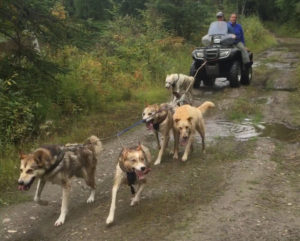 This past week, we harnessed and ran several small dog teams. The purpose was two-fold.
This past week, we harnessed and ran several small dog teams. The purpose was two-fold.
First, we wanted our youngest dogs: Cloud, Razz and Peach to begin their first Mushing Season on a happy, positive note. We did this by hooking up small teams (only 6 or 7 dogs) and focusing primarily on these youngsters. They, in turn, got accustomed to running in harness without all the hook up excitement that a larger dog team produces. We’d like these three girls to feel confident in themselves before they start running next to a potentially intimidating dog like Kodiak, Champ or Mismo. All three youngsters did well and Cloud barked for the duration of the training run.
Secondly, we needed to get the ATV four wheelers and mushing gear set up and ready. These are endless tasks that seem a lot more fun when you get to run a dog team. Such as:
- The ATVs need oil changes, tires checked, brakes cleaned and packed with essentials we might need while training: spare harnesses, leashes, bungees, extra rope, etc.
- The Howling Dog Alaska harnesses have been sorted and now hang outdoors. The covered harness rack is positioned in the center of the yard and easily accessible. We keep the harnesses organized by size: S (Lydia, Prata, etc), M (Chevie, Spark, etc), L (Five, Commando, etc) and XL (Driver, Mismo, etc). We use training harnesses throughout the mud and muck season. There is a lot of wear and tear to harnesses during Fall training. Once the freeze/thaw period is over and we have 100% snow cover we will graduate to race harnesses.
- We also use training mainlines now. This mainline is securely attached to the ATV by a locking carabiner. Pairs of leashes (tug lines) are permanently attached to the mainline. Each leash then attaches to a dog’s harness with a snap. If you only want to attach a single dog in
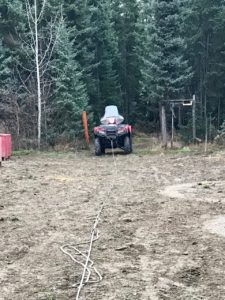 one spot then both leashes attach to that one dog.
one spot then both leashes attach to that one dog. - We cleaned and greased all the snaps. They are high quality “Swedish Snaps” (FYI they don’t call them that in Sweden.)
- We looked through all the leashes for wear and tear. Over time, they do wear out. The first set of leashes are attached approximately four feet from the ATV. After this first set, additional leashes are attached in pairs every seven foot. Depending on the number of dogs on your team: 8, 10, 12 or 14…. the lead dogs’ leashes are 25 ft, 32 ft, 39 ft, or 46 ft in front of your ATV.
In our mushing harness / mainline system, each dog has only one leash. You might notice that ther mushers sometimes use two leashes – one to their harness and one to their collar. We prefer our dogs to have only one point of attachment to the mainline. This gives them more freedom to skirt around trail obstacles or avoid hazards or holes. But this also creates the potential for more unstructured team chaos. In photos you might see that our dogs can turn around and visit their team mates or go off to the side of the trail. Each dog has a lot of freedom to do as they choose. This is where you need to understand the difference between training dogs versus conditioning dogs. We must train our dogs to listen to our commands, get along with each other and act as a team. Only then will we reduce that chaos and they run as a team. Conditioning dogs to be physically able to run miles upon miles upon miles is the easy part.
Let it all begin!

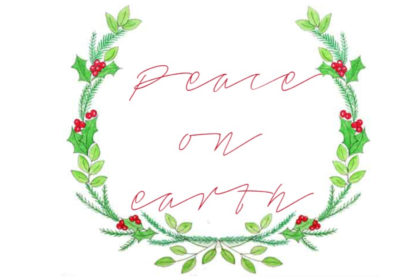
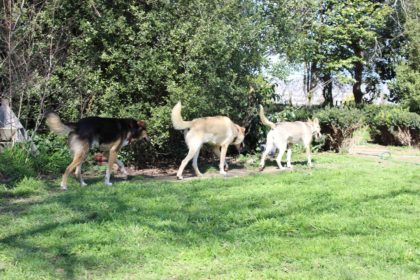
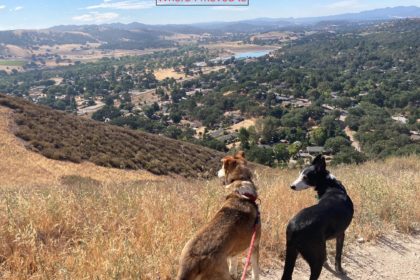
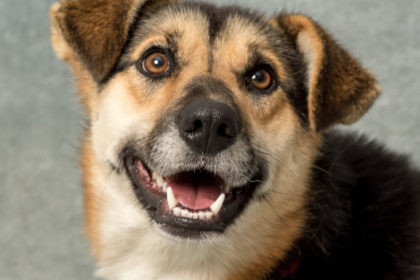
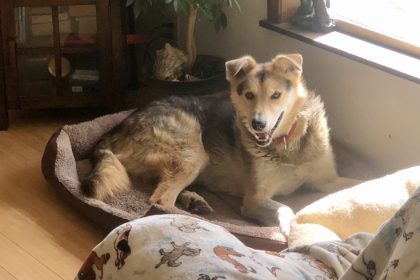
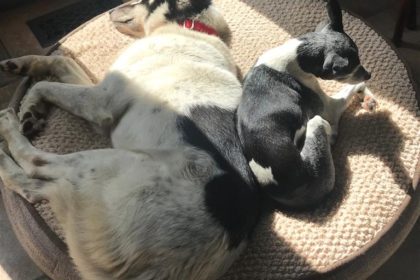
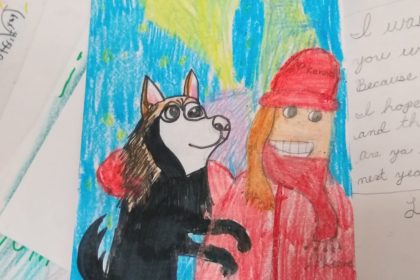

I am excited that the training and conditioning season has begun! And next is the actual racing season! It looks like lots and lots of work goes in to preparing for these seasons! I’m sure mushers and dogs are excited the season has begun! Good work!
Woohoo! I bet the team is excited!
Nice detailed info on your training prep.
Thank you
WOOF WOOF WOOF
I’m ready!!!
GO DOGGIES!!!
Great detail in this post – and you are so wise re: “training” v. “conditioning” – thanks ever so much!
Happy Team Training and Conditioning Seasonto you all!!!! Looks like some happy Teams in the pictures, enjoying the muddy mess of the early season! Great explaination of the task at hand….it all begins now doesnt it. Keep them pups cool, happy and enjoying the fun….thats what its all about!
Anxious that the training has begun! Go SPK Dogs! Ready Freddy–Let’s Go!!!
Awwww here we go. Begin again! Good Dawgs! YAY
Thank you for sharing. This is so exciting. Go SPK! And puppies!!!! WOW. If not for the professional surgical intervention, would they have even been born alive? Oh….I’m so glad you have veterinary doctors at the ready and are able to get to the vet hospital with any dog that needs immediate medical care. Thank you for caring that much – a lot of people don’t take their dogs to the vet because of money. (I gladly pay my vet bills – even if it means not paying other bills at the time. My vets take care of my best friends.)
Training is hard – every interaction with a dog is training, really, for a long time. But SPK has some experienced racers that will “only” need conditioning – so that’s got to feel good.
We are all following. Thank you for including us in your lives.
So much to do to begin the season! I can see where training can be a more difficult task than conditioning. Removing the chaos by training listening skills and training good social behavior makes so much sense….helps a team meld together. Very cool! So excited training/conditioning season is here.
Thank you for sharing . The mechanics are always interesting to me. SO…? Is there a physical difference between the Training Harness and the racing harness? Thank you. GO TEAMS !!